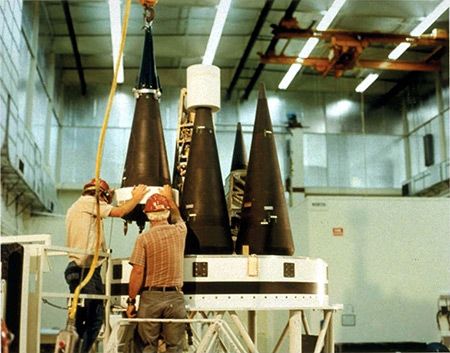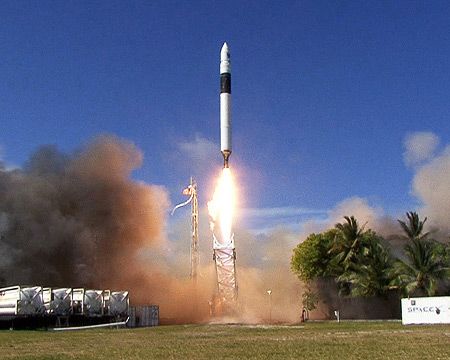Here I would like to suggest readers a quotation from my book “Structure of the global catastrophe” (http://www.scribd.com/doc/7529531/-) there I discuss problems of preventing catastrophes.
Refuges and bunkers
Different sort of a refuge and bunkers can increase chances of survival of the mankind in case of global catastrophe, however the situation with them is not simple. Separate independent refuges can exist for decades, but the more they are independent and long-time, the more efforts are necessary for their preparation in advance. Refuges should provide ability for the mankind to the further self-reproduction. Hence, they should contain not only enough of capable to reproduction people, but also a stock of technologies which will allow to survive and breed in territory which is planned to render habitable after an exit from the refuge. The more this territory will be polluted, the higher level of technologies is required for a reliable survival.
Very big bunker will appear capable to continue in itself development of technologies and after catastrophe. However in this case it will be vulnerable to the same risks, as all terrestrial civilisation — there can be internal terrorists, AI, nanorobots, leaks etc. If the bunker is not capable to continue itself development of technologies it, more likely, is doomed to degradation.
Further, the bunker can be or «civilizational», that is keep the majority of cultural and technological achievements of the civilisation, or “specific”, that is keep only human life. For “long” bunkers (which are prepared for long-term stay) the problem of formation and education of children and risks of degradation will rise. The bunker can or live for the account of the resources which have been saved up before catastrophe, or be engaged in own manufacture. In last case it will be simply underground civilisation on the infected planet.
The more a bunker is constructed on modern technologies and independent cultural and technically, the higher ammount of people should live there (but in the future it will be not so: the bunker on the basis of advanced nanotechnology can be even at all deserted, — only with the frozen human embryos). To provide simple reproduction by means of training to the basic human trades, thousand people are required. These people should be selected and be in the bunker before final catastrophe, and, it is desirable, on a constant basis. However it is improbable, that thousand intellectually and physically excellent people would want to sit in the bunker “just in case”. In this case they can be in the bunker in two or three changes and receive for it a salary. (Now in Russia begins experiment «Mars 500» in which 6 humans will be in completely independent — on water, to meal, air — for 500 days. Possibly, it is the best result which we now have. In the early nineties in the USA there was also a project «Biosphera-2» in which people should live two years on full self-maintenance under a dome in desert. The project has ended with partial failure as oxygen level in system began to fall because of unforeseen reproduction of microorganisms and insects.) As additional risk for bunkers it is necessary to note fact of psychology of the small groups closed in one premise widely known on the Antarctic expeditions — namely, the increase of animosities fraught with destructive actions, reducing survival rate.
The bunker can be either unique, or one of many. In the first case it is vulnerable to different catastrophes, and in the second is possible struggle between different bunkers for the resources which have remained outside. Or is possible war continuation if catastrophe has resulted from war.
The bunker, most likely, will be either underground, or in the sea, or in space. But the space bunker too can be underground of asteroids or the Moon. For the space bunker it will be more difficult to use the rests of resources on the Earth. The bunker can be completely isolated, or to allow “excursion” in the external hostile environment.
As model of the sea bunker can serve the nuclear submarine possessing high reserve, autonomy, manoeuvrability and stability to negative influences. Besides, it can easily be cooled at ocean (the problem of cooling of the underground closed bunkers is not simple), to extract from it water, oxygen and even food. Besides, already there are ready boats and technical decisions. The boat is capable to sustain shock and radiating influence. However the resource of independent swimming of modern submarines makes at the best 1 year, and in them there is no place for storage of stocks.
Modern space station ISS could support independently life of several humans within approximately year though there are problems of independent landing and adaptation. Not clearly, whether the certain dangerous agent, capable to get into all cracks on the Earth could dissipate for so short term.
There is a difference between gaso — and bio — refuges which can be on a surface, but are divided into many sections for maintenance of a mode of quarantine, and refuges which are intended as a shelter from in the slightest degree intelligent opponent (including other people who did not manage to get a place in a refuge). In case of biodanger island with rigid quarantine can be a refuge if illness is not transferred by air.
A bunker can possess different vulnerabilities. For example, in case of biological threat, is enough insignificant penetration to destroy it. Only hi-tech bunker can be the completely independent. Energy and oxygen are necessary to the bunker. The system on a nuclear reactor can give energy, but modern machines hardly can possess durability more than 30–50 years. The bunker cannot be universal — it should assume protection against the certain kinds of threats known in advance — radiating, biological etc.
The more reinforced is a bunker, the smaller number of bunkers can prepare mankind in advance, and it will be more difficult to hide such bunker. If after a certain catastrophe there was a limited number of the bunkers which site is known, the secondary nuclear war can terminate mankind through countable number of strikes in known places.
The larger is the bunker, the less amount of such bunkers is possible to construct. However any bunker is vulnerable to accidental destruction or contamination. Therefore the limited number of bunkers with certain probability of contamination unequivocally defines the maximum survival time of mankind. If bunkers are connected among themselves by trade and other material distribution, contamination between them is more probable. If bunkers are not connected, they will degrade faster. The more powerfully and more expensively is the bunker, the more difficult is to create it imperceptibly for the probable opponent and so it easeir becomes the goal for an attack. The more cheaply the bunker, the less it is durable.
Casual shelters — the people who have escaped in the underground, mines, submarines — are possible. They will suffer from absence of the central power and struggle for resources. The people, in case of exhaustion of resources in one bunker, can undertake the armed attempts to break in other next bunker. Also the people who have escaped casually (or under the threat of the comong catastrophe), can attack those who was locked in the bunker.
Bunkers will suffer from necessity of an exchange of heat, energy, water and air with an external world. The more independent is the bunker, the less time it can exist in full isolation. Bunkers being in the Earth will deeply suffer from an overheating. Any nuclear reactors and other complex machines will demand external cooling. Cooling by external water will unmask them, and it is impossible to have energy sources lost-free in the form of heat, while on depth of earth there are always high temperatures. Temperature growth, in process of deepening in the Earth, limits depth of possible bunkers. (The geothermal gradient on the average makes 30 degrees C/kilometers. It means, that bunkers on depth more than 1 kilometre are impossible — or demand huge cooling installations on a surface, as gold mines in the republic of South Africa. There can be deeper bunkers in ices of Antarctica.)
The more durable, more universal and more effective, should be a bunker, the earlier it is necessary to start to build it. But in this case it is difficult to foresee the future risks. For example, in 1930th years in Russia was constructed many anti-gase bombproof shelters which have appeared useless and vulnerable to bombardments by heavy demolition bombs.
Efficiency of the bunker which can create the civilisation, corresponds to a technological level of development of this civilisation. But it means that it possesses and corresponding means of destruction. So, especially powerful bunker is necessary. The more independently and more absolutely is the bunker (for example, equipped with AI, nanorobots and biotechnologies), the easier it can do without, eventually, people, having given rise to purely computer civilisation.
People from different bunkers will compete for that who first leaves on a surface and who, accordingly, will own it — therefore will develop the temptation for them to go out to still infected sites of the Earth.
There are possible automatic robotic bunkers: in them the frozen human embryos are stored in a certain artificial uterus and through hundreds or thousand years start to be grown up. (Technology of cryonics of embryos already exists, and works on an artificial uterus are forbidden for bioethics reasons, but basically such device is possible.) With embryos it is possible to send such installations in travel to other planets. However, if such bunkers are possible, the Earth hardly remains empty — most likely it will be populated with robots. Besides, if the human cub who has been brought up by wolves, considers itself as a wolf as whom human who has been brought up by robots will consider itself?
So, the idea about a survival in bunkers contains many reefs which reduce its utility and probability of success. It is necessary to build long-term bunkers for many years, but they can become outdated for this time as the situation will change and it is not known to what to prepare. Probably, that there is a number of powerful bunkers which have been constructed in days of cold war. A limit of modern technical possibilities the bunker of an order of a 30-year-old autonomy, however it would take long time for building — decade, and it will demand billions dollars of investments.
Independently there are information bunkers, which are intended to inform to the possible escaped descendants about our knowledge, technologies and achievements. For example, in Norway, on Spitsbergen have been created a stock of samples of seeds and grain with these purposes (Doomsday Vault). Variants with preservation of a genetic variety of people by means of the frozen sperm are possible. Digital carriers steady against long storage, for example, compact discs on which the text which can be read through a magnifier is etched are discussed and implemented by Long Now Foundation. This knowledge can be crucial for not repeating our errors.











